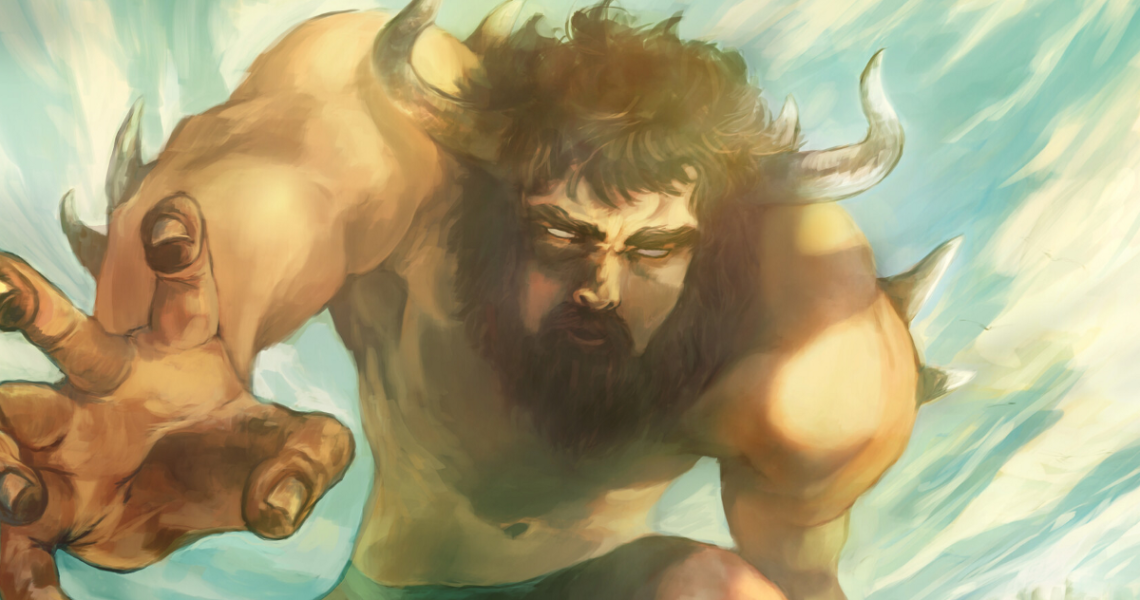The Fomorians- Giants of the Irish mythology:
Bloodthirsty, warrior giants which came from far across the sea? Or was it the underworld? Perhaps they were more like monsters with a single leg, arm, and eye? No, it was heads of goats they had or maybe not. Irish legends tell many tales of the supernatural Fomorians.
The Fomorians are a race of supernatural giants in Irish mythology. In some accounts, the Fomorians are described as one of the earliest races to have invaded and settled in Ireland. The Fomorians are often described as monstrous, hideous-looking creatures. They were sometimes said to possess the power over certain natural phenomena, in particular destructive elements. Some scholars believe that the Fomorians are a personification of these forces of nature.
Supernatural Beings from Below of Far Away?
There are several explanations regarding the name of this mythological race. The first part of the name, ‘Fo’, is generally said to mean ‘below’ or ‘beneath’. The second part, however, is less clear, and it is this part of the name that has generated debate amongst scholars. One interpretation, for example, is that ‘mor’ means sea, and therefore these were a race of beings that came from under the sea. Another interpretation, which is more popular, is that this word means ‘phantom’ or ‘spirit’ – indicating that these were supernatural beings from the underworld.
The origins of the Fomorians are also uncertain, though many sources mention that they arrived in Ireland on ships. In some sources, they are described as having dark skin and dark hair, thus leading to the speculation that the Fomorians sailed all the way to Ireland from Africa or Asia. In other sources, the Fomorians are painted as grotesque abominations. One account, for example, depicts them as having only one eye, one leg, and one arm, whilst another portrays them as having the bodies of human beings, but with the heads of goats. It may be mentioned, however, that good-looking Fomorians may also be found in the ancient sources. One of these, for example, is Elatha, a king of the Fomorians, who was described as handsome and golden-haired.
War and Enslavement
It may be added that Elatha was also different from the other Fomorians in terms of personality. Elatha is described in Irish mythology as being interested in justice. For example, when his son, Bres, wanted to go to war with the TuathaDéDanann, another supernatural race, Elatha refused to join him, as he reckoned that the cause for war was unjust. By contrast, other Fomorians are portrayed as warlike and blood-thirsty. In general, stories say the Fomorians took pleasure in waging war, and when they conquered other races, they would proceed to enslave them. This happened, for instance, to the Nemeds, who attempted to invade Ireland after the Fomorians. This happened as well to the TuathaDéDanann during the reign of Bres. The oppressive rule of this king resulted in the Second Battle of Mag Tuired, during which the TuathaDéDanann succeeded in freeing themselves from the tyranny of Bres.
Partholons
As a race of supernatural beings, the Fomorians are described as having the power to control certain forces of nature. Notably the more destructive ones, including winter, crop-blight, and plague. The last of these is often mentioned in the texts as the means by which the Fomorians ultimately triumph over their enemies. During their invasion of Ireland, for instance, the Fomorians encountered the Partholons, the first invaders of the island, and they are said to have fought many battles with them. After several years of fighting, the Fomorians succeeded in defeating the Partholons when they unleashed a plague upon them.
Balor, a Fomorian king, is also well-known for his destructive ability. This Fomorian, who came to the aid of Bres. In his battle against the TuathaDéDanann, was a giant with one eye. Balor’s eye is said to be so destructive / poisonous that it would destroy anything it looked at.
Following their defeat by the Tuatha Dé Danann during the Second Battle of Mag Tuired, the Fomorians. Lost their rule over Ireland, as well as their central role in Irish mythology. Nevertheless, legends say they were given the province of Connacht. And were even allowed to marry some of the Tuatha Dé Danann.
